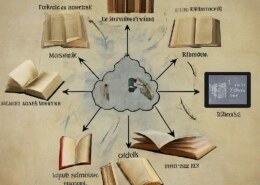Balancing technology use and mental health involves intentional practices to reduce screen time and enhance well-being: 1. Set Boundaries: Designate tech-free times, such as during meals, before bed, and upon waking. This helps reduce stress and improve sleep quality. 2. Use Tech Mindfully: Be conscRead more
Balancing technology use and mental health involves intentional practices to reduce screen time and enhance well-being:
1. Set Boundaries: Designate tech-free times, such as during meals, before bed, and upon waking. This helps reduce stress and improve sleep quality.
2. Use Tech Mindfully: Be conscious of your online activities. Prioritize meaningful connections and limit mindless scrolling or consumption of negative content.
3. Schedule Breaks: Take regular breaks from screens to rest your eyes and mind. Follow the 20-20-20 rule: every 20 minutes, look at something 20 feet away for 20 seconds.
4. Prioritize In-Person Interactions: Engage in face-to-face conversations and activities to build stronger relationships and combat feelings of isolation.
5. Limit Notifications: Turn off non-essential notifications to reduce distractions and anxiety.
6. Engage in Offline Activities: Cultivate hobbies and interests that don’t involve screens, such as reading, exercise, or outdoor activities.
7. Reflect on Usage: Periodically assess how technology affects your mood and productivity. Make adjustments to enhance your well-being.
By implementing these strategies, you can create a healthier balance between technology use and mental health.
See less

Digital technology offers vast opportunities to innovate, preserve and expand traditional art forms, enhancing their reach and engagement. *Digital Platforms for Traditional Arts* 1. Virtual Museums and Galleries: Online showcases for traditional art. 2. Digital Archives: Preservation and access toRead more
Digital technology offers vast opportunities to innovate, preserve and expand traditional art forms, enhancing their reach and engagement.
*Digital Platforms for Traditional Arts*
1. Virtual Museums and Galleries: Online showcases for traditional art.
2. Digital Archives: Preservation and access to rare art pieces.
3. Social Media and Online Communities: Connecting artists and enthusiasts.
4. E-Learning Platforms: Teaching traditional art techniques.
5. Digital Marketplaces: Selling traditional art globally.
*Digital Tools for Artistic Expression*
1. Digital Painting and Illustration Software.
2. 3D Modeling and Animation.
3. Virtual Reality (VR) and Augmented Reality (AR) experiences.
4. Digital Photography and Editing.
5. Audio-Visual Tools for Music and Dance.
*Innovative Applications*
1. Digital Restoration of Traditional Art.
2. Virtual Art Conservatories.
3. Interactive Art Installations.
4. Digital Storytelling for Folk Tales.
5. Online Festivals and Cultural Events.
*Examples of Digital Innovation in Traditional Arts*
1. Google Arts & Culture’s Indian Art Collection.
2. Digital Museum of Indian Cinema.
3. Virtual Reality experiences of Indian classical dance.
4. Online platforms for traditional crafts (e.g., Etsy).
5. Digital documentation of folk music and dance.
*Benefits*
1. Global accessibility.
2. Increased audience engagement.
3. Preservation of cultural heritage.
4. New revenue streams for artists.
5. Enhanced education and outreach.
*Challenges*
1. Digital divide and accessibility.
2. Intellectual property protection.
3. Cultural appropriation concerns.
4. Technical expertise requirements.
5. Balancing tradition with innovation.
*Way forward*
1. AI-generated traditional art.
2. Blockchain-based art authentication.
3. Virtual and augmented reality experiences.
4. Cross-cultural collaborations.
5. Digital art therapy and wellness.
By embracing digital technology, traditional art forms can:
– Expand global reach
See less– Engage new audiences
– Preserve cultural heritage
– Foster innovation
– Ensure sustainability